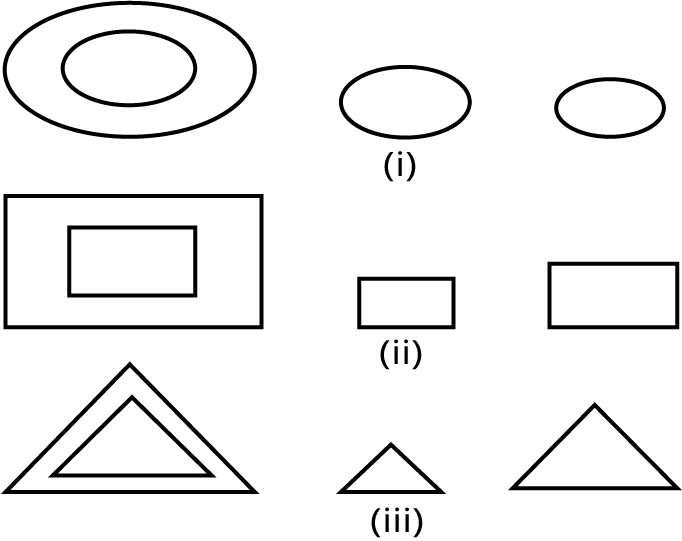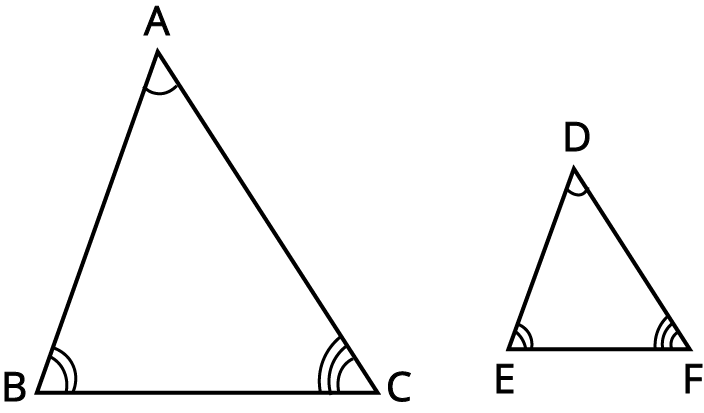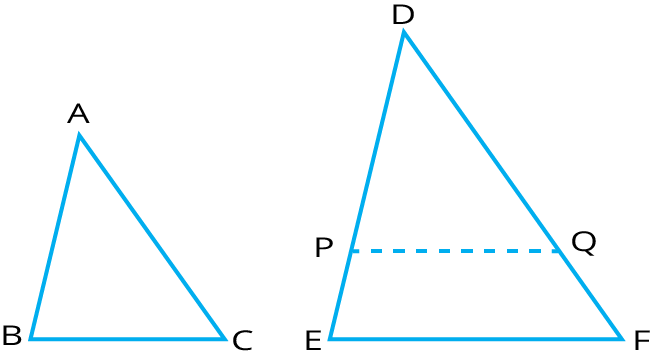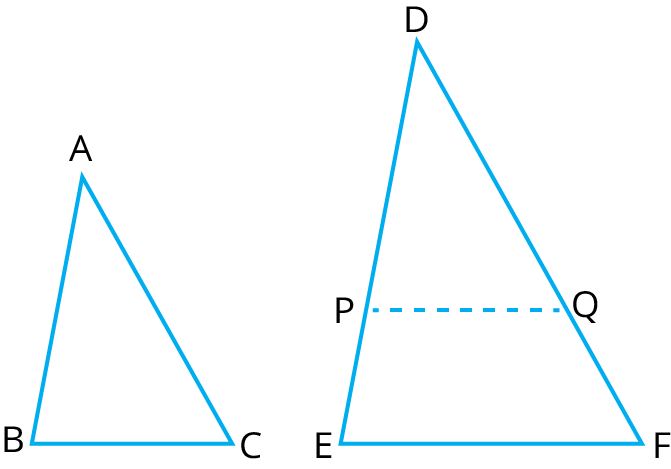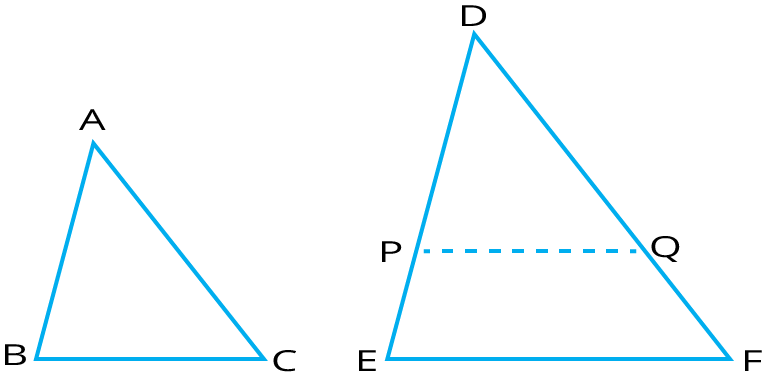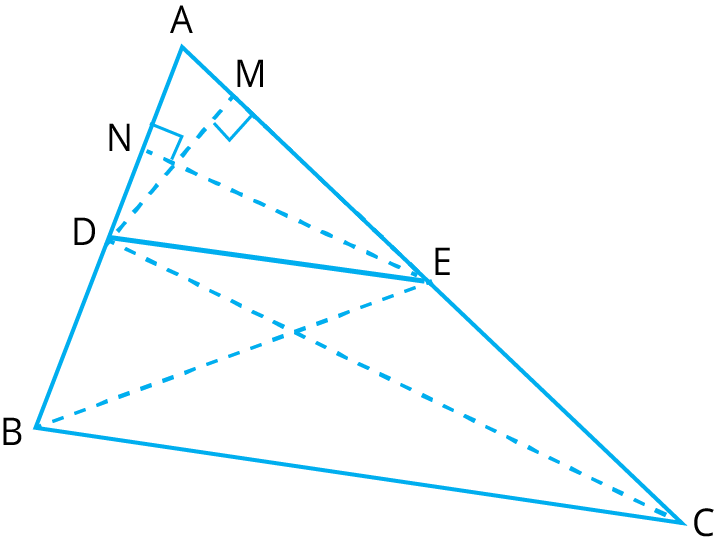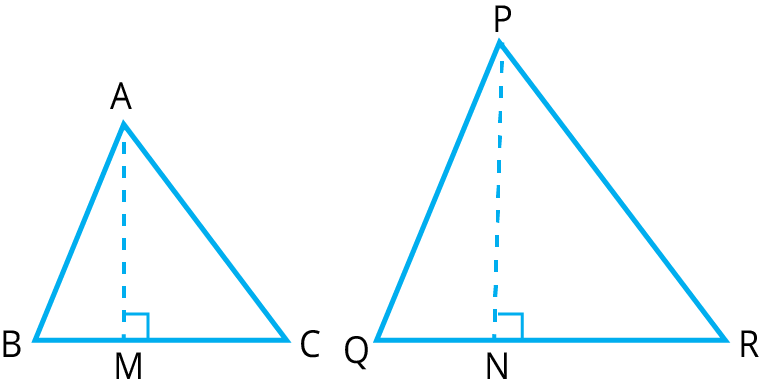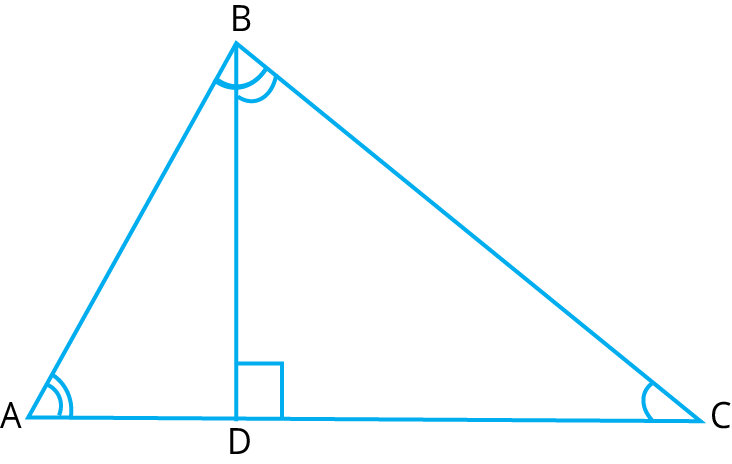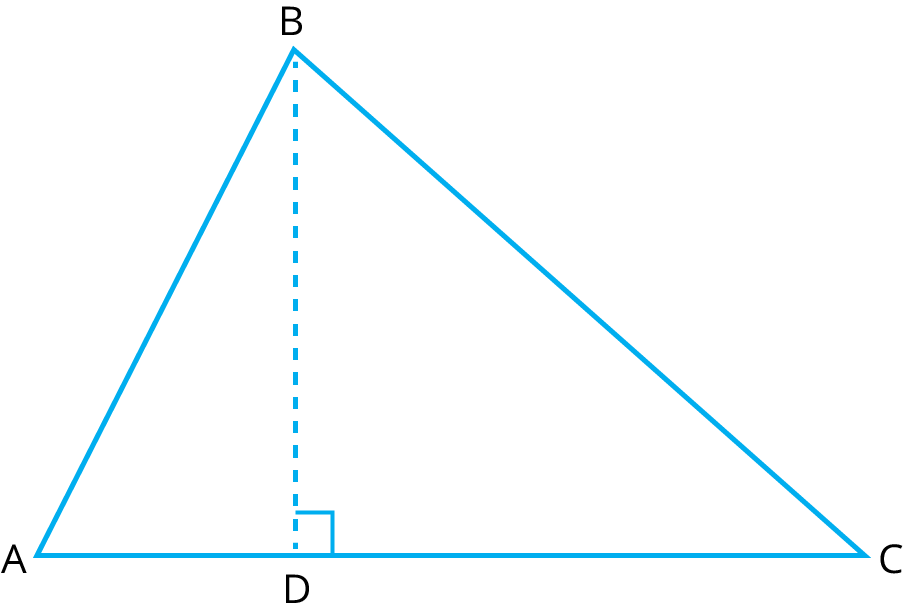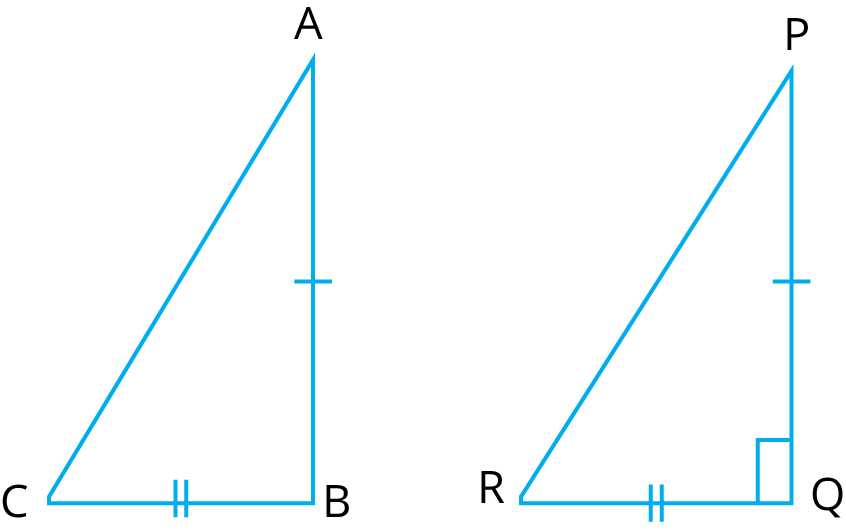Exam - Focused Revision Notes for CBSE Class 10 Maths Chapter 6 - Triangles
Triangles Class 10 Notes CBSE Maths Chapter 6 (Free PDF Download)



FAQs on Triangles Class 10 Notes CBSE Maths Chapter 6 (Free PDF Download)
1. A figure PQO has, DE||OQ and PDF||OR, show that EF||QR.
It is Given that,
In ΔPQO, DE || OQ
So by using the Basic Proportionality Theorem or the Thales theorem,
PD/DO = PE/EQ……………… ..(i)
Also given, in ΔPQO, DE || OQ,
From the principle of Basic Proportionality Theorem,
PD/DO = PF/FR………………… (ii)
From equation (i) and (ii), we get,
PE/EQ = PF/FR
Therefore, by the converse of Basic Proportionality Theorem,
EF || QR, in ΔPQR.
Hence it is proved.
2. Define the congruence of triangles?
If the size and angles of two triangles are one and same in length and measurement, then those triangles are known as congruent triangles. A property states that all congruent triangles may not be similar but all the similar triangles were congruent. It has four different rules used to confirm that those triangles are said to be congruent to each other. They are
Side-side-side SSS
Side-angle-side. SAS
Angle-angle-angle AAA
Angle-side-angle ASA
3. Who invented triangles?
Blaise Pascal, a famous mathematician, had invented these triangles in 1653. For the first time, these are known as Pascal triangles. Some studies say that few researchers have found some instances regarding these triangles before the invention of Pascal.
4. What is the difference between congruent and similar figures according to Revision Notes of Chapter 6 of Class 10 Maths?
In simple terms, two figures are said to be congruent when they possess the same shape and size. This topic has been dealt with before in earlier classes. On the other hand, some figures have the same shape but not necessarily the same size. These figures are then referred to as similar figures. You will learn more about similarity in Chapter 6 of your class 10 Maths NCERT textbook.
5. What can be said about the similarity of triangles according to Revision Notes of Chapter 6 of Class 10 Maths?
Since triangles are polygons, the same rules can be applied to prove the similarity between these figures too. Two triangles can be deemed similar, if either their corresponding angles are equal or their corresponding sides are in the same ratio or proportion. Generally, if the corresponding angles of two triangles are found to be equal, then they are known as equiangular triangles. Students should note that the ratio of any two corresponding sides in two equiangular triangles is always the same.
6. How can you understand the Triangles chapter better?
When students study maths chapters by themselves, it can be quite difficult for them to understand some topics in the very first try. For better understanding of any chapter, you should make your own notes and keep on revising them. However, making notes can be a tedious process which is why Vedantu has already made the best Revision Notes of Chapter 6 of Class 10 Maths. You can study from here to gain a better understanding of the chapter. They are also available on Vedantu Mobile app. The solutions and notes are free of cost.
7. What is Exercise 6.3 of the Chapter 6 of Class 10 Maths all about?
Exercise 6.3 of Chapter 6 deals with writing the similarity criteria used to describe the triangles as similar. You are also asked to write the pairs of similar triangles in the symbolic form in some questions. Most other questions simply ask you to prove that the triangles given are similar. You will be able to answer all these questions if you go through Vedantu’s Revision Notes of Chapter 6 of Class 10 Maths properly.
8. What is the AAA and SSS criteria according to Revision Notes of Chapter 6 of Class 10 Maths?
When two angles in two triangles are identical, their corresponding sides are also going to have the same ratio which makes these triangles comparable. This is known as the AAA or Angle-Angle-Angle criterion of triangles. Moreover, if any side of one triangle is proportional to the side of the other given triangle, their corresponding angles can be deemed as equal, making the two triangles comparable. This is the SSS or Side-Side-Side similarity criterion.




















 Watch Video
Watch Video


